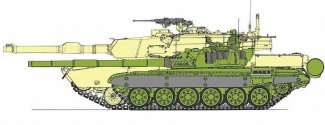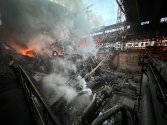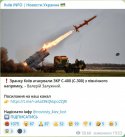That has a lot to do with them being bigger tanks. Relative to their volume, T tanks are as well armored as western tanks.
View attachment 105097
And yes, they might have been created with a defensive doctrine in mind but that doesn't spare the west from developing requirements around faulty assumptions, which was the case of the Chieftain/Challenger family and early Abrams. Early requirements for these tanks revolved around erroneus assumptions about soviet weapons performance and specs, for example, thinking the T-64 had the same 115mm gun as the T-62 so their early versions had protection levels to deal with this.
They also assumed T-64's and T-72's still used steel armor, which as we already know, is wrong as the T-64's was one of the earliest tanks to introduce composite armor.
Once the west realized that Soviet tanks had bigger guns and were better armored than what they anticipated, they started to improve the armor and targeting systems of their tanks. That's how we got the early upgunned and uparmored M1IP and M1A1HA.
This only applies to the M1 and Leopard 2, though. The Challenger 2 never got improvements from its original requirements mostly due to lack of money; it still uses Gen 1 thermals( while they label it as Gen 2, the sensor still is Gen 1), and there is the whole issue of using a rifled gun with a three piece ammunition with a manual loader.
The brits kept the rifled gun precisely because of that assumption that the T-64 and T-72 used steel armor so HESH rounds would be highly effective agaisnt them. But as they don't, HESH rounds can't penetrate composite armor. Another negative aspects of the Challenger 2 its is ammo storage as it has ammo racks spreaded all across the turret and hull.
A T-72B3 with K5 can deal with with a Leo 2A4, though. Most Leo 2A4(which I guess is what Ukraine will get) are just as much 80's tech as a T-80U.



